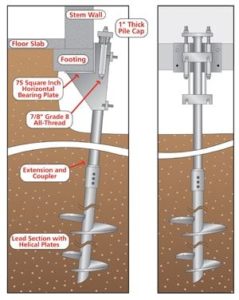
The structural integrity of any building – residential, commercial, industrial – depends on a sound foundation. Even foundation issues that seem small can quickly turn into big problems if they’re not fixed right away. Your goal as a property owner should be to spot small foundation problems early.
Many of our customers are surprised when we tell them most foundation problems are caused by water. However, it’s true. Either too much or too little water in the soil under your home’s foundation can lead to serious structural problems that will end up costing you a lot of money to fix.

It wasn’t that long ago that uneven concrete slabs were handled either by replacing them with new slabs, or via a repair technique called “mudjacking”. Both these methods had their drawbacks though.
It takes time to dig up an uneven concrete slab and replace it with a new one. This is because freshly poured concrete takes time to dry and that means you can’t use the new slab right away. Also, if the slab became uneven because the soil was weak and unable to support it, the same thing will happen with the new slab.
Mudjacking isn’t used that much anymore. However, it involved injecting a cement slurry under the slab in order to raise and level it. The slurry is heavy though and it adds more weight to soil that may already be struggling to support the slab. That may be why the slab became uneven in the first place.
Today, almost all concrete slab lifting and leveling jobs are handled via polyurethane foam injection. It’s a fast, minimally-invasive procedure that only takes a few hours in most cases, and the foam is ultra lightweight. It won’t add more weight to the soil. Also, as soon as the repair is complete, you can start using the slab again.
If you own beachfront property in Florida, you know that seawalls act as a protective barrier between land and water. However, seawalls themselves can erode over time via extreme weather events, tidal fluctuations, and a slowly rising sea level.

